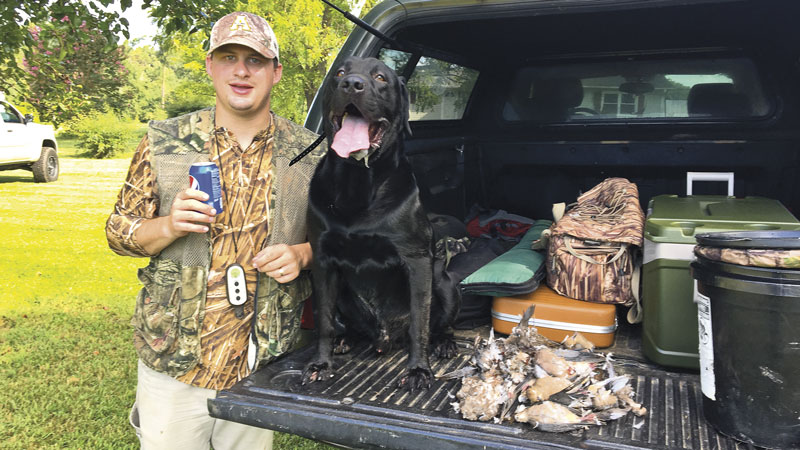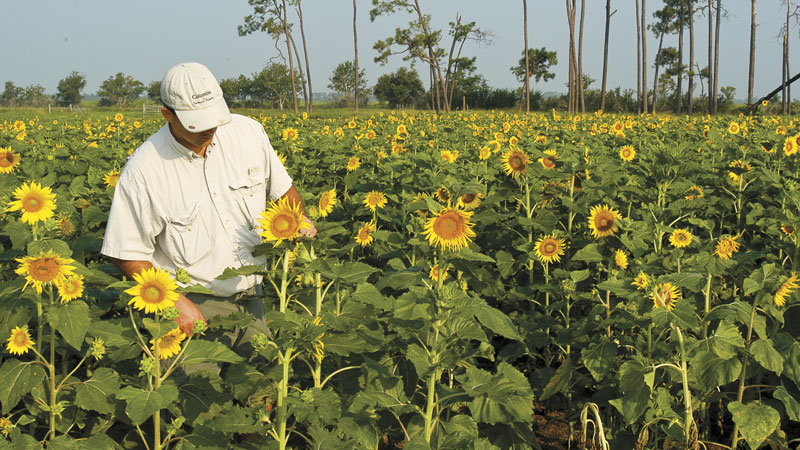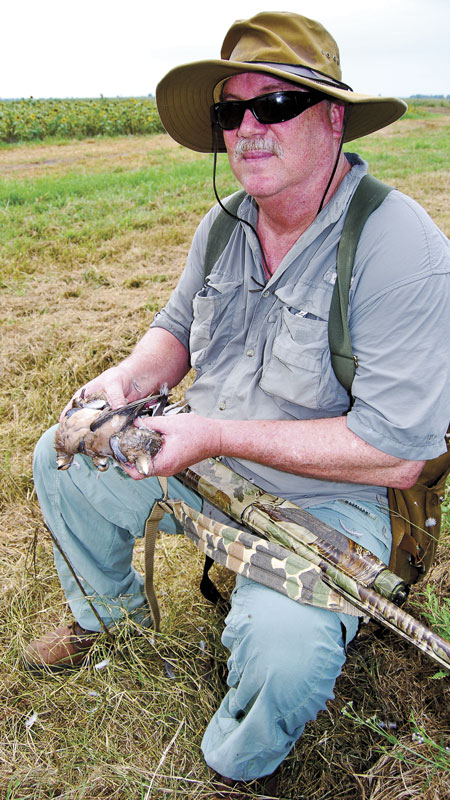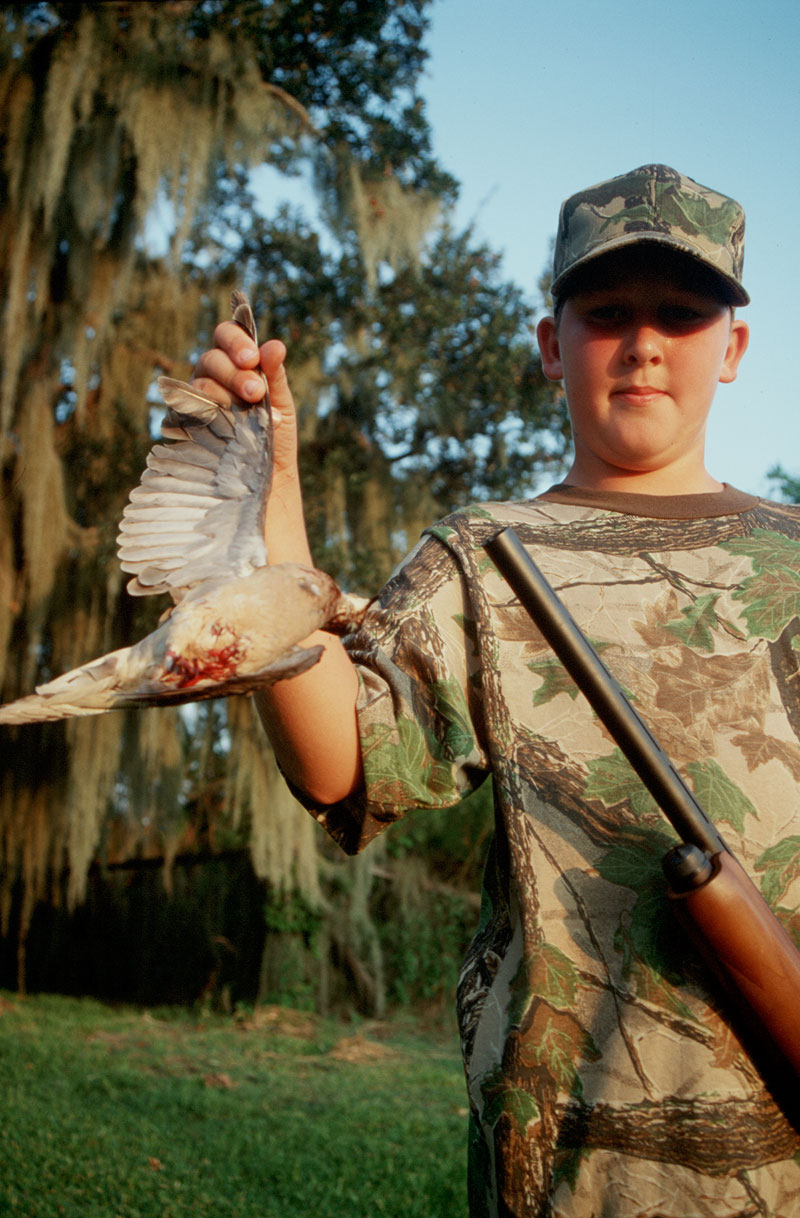Dove hunting holds a high place among Carolina hunters.
A good shoot can be as much of a social event as a great kickoff for fall hunting seasons across the Carolinas. So break out that shell vest, that old shotgun and find a front-row seat.
Unlike many other forms of hunting, a dove shoot is more of a social occasion. It is an opportunity to make new friends and renew old acquaintances, sharing in the opening of a new season.
Hunters brush the dust off gear stored from a long offseason. Faded hunting vests are draped over hunters in short sleeves with dove stools in hand as they wait for official shooting time to begin. It is an opportunity for an older generation to encourage boys and girls, sharing stories of days gone by, as the old Remington 1100s or Browning Sweet 16s ring through the countryside as birds make their way to the fields.
The dove shoot is just that: a shoot rather than a hunt. Months of planning have gone into preparing a field for opening day. The name itself hints at the different approach required for these little grey birds.
Good dove shoots begin with one thing: sunflowers. Everything else is secondary. The sunflower is filet mignon to the morning dove. Fields with big sunflowers outperform all other crops. Mix in a little brown top millet or sorghum, and you have a good mixture.
Plowed rows help bring in the doves
Most hunters know doves do not like tall grass, so plowing between rows often helps. Four or five rows of sunflowers, then a 10-foot wide, plowed strip, followed by four or five rows of millet, another plowed area, repeated across a field, is often the best combination.
Early September days are scorching hot. Often, Labor Day weekend welcomes triple-digit temperatures. Hunters in North Carolina can open up at 30 minutes before sunrise. But South Carolina hunters are limited to afternoons-only the first segment of the season, when weather can be brutal. Drawing a stand in the shade is a premium.
As the day wears on, the doves start to come, as if they are compelled. First, a few at a time zoom into the field. Then groups of four or five graduate to flocks of a dozen or more, wheeling as they come in at treetop level and dive into the field, then barrel back up over the trees on the far side of the field. Some doves draw more than a dozen shots on their way across the field. Men yell one another’s names to signal approaching birds or warn of birds flying too low for a safe shot. For hours, the ordinarily quiet countryside is filled with the distant popping of shotguns, panting of hot, dry-mouthed dogs. And don’t forget the occasional swearing of old men whose shooting is a tad rusty form a nine-month layoff.

Anyone can participate in a dove shoot, regardless of skill
The dove shoot is the great equalizer in hunting. Not much physical exertion is needed except for dealing with the heat. No gender, age or socio-economic barriers exist. A license, a shotgun, a vest full of shells and a penchant for camaraderie are all that are required.
Most hunters prefer a 12-gauge with No. 7 ½ shot. But these big guns are not necessary at all for doves. A good 20-gauge with No. 8 shot or even a 28-gauge loaded with No. 6 shot is a good choice. It is in the dove field where the 16-gauge is most-often seen. Once referred to as the gun that “carries like a 20 but shoots like a 12,” the 16-gauge is the most-overlooked shotgun available today. No. 8 shot is an excellent choice for the 16-gauge. But if you can find it, get some No. 9 shot in any of these gauges and you will not be disappointed. The dove is not difficult to bring down. And the No. 9 shot gives you a lot more shot in the shell.
To all who participate, the dove shoot is an opportunity to get together and share the sport with people from all generations and walks of life. Marksmanship here is required for success. But it is not as important as participation. Skill is not as desired as enthusiasm.
Shooting doves is just a small part of a great dove shoot
The dove shoot is one of the great southern traditions, an opportunity to go back to a time when a community of hunters gathered around a field to renew old friendships, tell stories of days long gone and to shoot doves. When the shooting stops everyone gathers around the trucks. Drinking Cokes and telling stories of our feast or famine in the field. This is the time when relationships are sealed, when generations unite in a common bond.
It is the pursuit of the dove that brings us here, but we are not connected by our rate of success, nor by the weapons we use, the pedigree of our dogs or the lifestyle we live. Here on the dove field, we share a love for nature of a small grey bird, and a lifestyle of hunting that begins a new season in the outdoors.

Public dove fields are numerous
Public dove fields are readily accessible to most hunters in the Carolinas.
The S.C. Department of Natural Resources plants and maintains numerous public dove fields across the state; most are available on a first-come, first-served basis. Each field has its own specific regulations and hunting dates; some are open Wednesdays and Saturdays, while others are open on Saturday afternoons only. Click here to check the regulations for South Carolina fields and regulations in your area.
North Carolina has more than 90 fields to choose from, with different crops and different regulations in place. Check them out here.
Safety in fields is a big concern for many hunters. With hunters scattered across the field, it can be dangerous if hunters are not paying attention. Avoid shooting at low birds, to prevent accidental shooting of other hunters. If you are not shooting in an upward trajectory, the bird is too low.

Get An Early Look If You Can
Many hunters head out on opening day of dove season having never seen the field being shot, maybe having received a last-minute invitation from a business connection, a friend at church or an acquaintance from the bleachers at a high school football field.
But if you have access to the field a few days before the season opens, it will be well worth your while to check the layout and watch how and where birds enter and leave. Try to watch at the same approximate time that the hunt will take place, as birds’ flight patterns may vary over a day’s time: a bird coming to the field from the roost at a certain time may arrive from one direction, while one coming from water may come from an entirely different direction.
It may be strange to equate doves with largemouth bass, but both will cuddle up to structure. For a bass, that might mean making its home next to a nice stump in the middle of a shallow flat. For a dove, however, structure might be a dead tree, a power line, a break in a tree line, even a high spot in a field. Birds like to enter or leave fields flying past such objects, so pick a stand within range of just such a spot. Birds especially like to light in big, lone trees along the edges of a field before diving in for the buffet line.
If strips of grain have been left in a field, they’re great places to hide and get shots at doves that have broken the first line of hunters and crash in for a meal.


